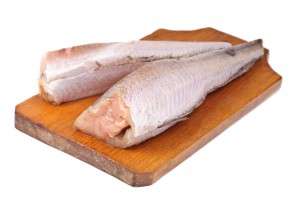Elizabeth Shephard, Family and Consumer Science Agent
 Brevard County is a great place to live especially if you enjoy fresh fish. This fact sheet explains some of the most common cuts of Finfish (any fish other than shellfish) you will find at local seafood markets. When buying fresh fish, ask your seafood dealer or fishmonger if he can customize your cut according to the recipe you will be using.
Brevard County is a great place to live especially if you enjoy fresh fish. This fact sheet explains some of the most common cuts of Finfish (any fish other than shellfish) you will find at local seafood markets. When buying fresh fish, ask your seafood dealer or fishmonger if he can customize your cut according to the recipe you will be using.
Common Cuts
- Determining freshness is easiest with whole fish. Buying a whole fish can also save you money because you can use the leftover parts to make stock, and if your fishmonger cuts the fish for free, you save even more money. To cook the whole fish remember that the spine is a conductor and the skin keeps moisture in.
- Drawn or gutted cuts are similar to whole except that the entrails and guts have been removed and the scales are left intact.
- A dressed fish has all of the entrails, fins, scales and head removed and sometimes it is skinned.
- The Butterflied cut means the fish is cut into fillets with belly meat left on and there are two fillets in one. This cut is often called split and cleaned and comes with the option of leaving the backbone on or off.
- Fillets are the most popular cut. Fillets can be boneless, or the ribs can be intact. Be sure to check for pin bones, which are tiny, thin bones found in the center of the fish. Some fish varieties will have more pin bones than others.
- A steak cut is a cross-section of a whole fish or large fish fillet. The fish is cut perpendicular to the spine and includes the bones. Fish steaks are cut parallel to either side of the spine and do not include the larger bones. Larger fish such as tuna, swordfish, salmon and mahi-mahi are often cut into steaks. Fish steaks from particularly large fish can be sectioned so they are boneless. Fish steaks can be grilled, pan-fried, broiled or baked.
References
Abeels, H, Adams, C., Courtney, E. Fluech, B. Krimsky, L., Mahan, W., Otwell, S., Saari, B., Sandoval, C., Shephard,, E.., Zamozski, K. Zimmerman, D. Florida Seafood at Your Fingertips Curriculum (2013). University of Florida IFAS Extension.
FS# 6173FCS
 0
0
